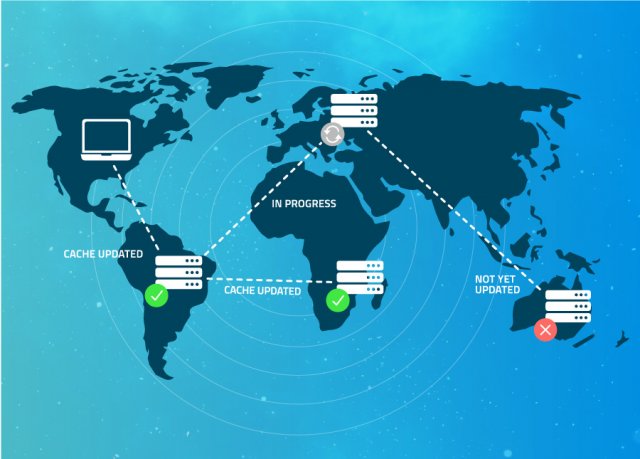
So, you’re ready to launch a new website. The files are all uploaded to the server, you’ve double checked to make sure all the links are working, and Google Analytics is in place. The last step is to change your domain IP address so that the world can view your hard work. You log into your registrar, find your domain, make the A record change, and wait.
And wait. And wait.
An hour later, you’re still waiting, wondering if you’ve made a mistake. Is the IP address right? Did I miss a setting on the server? I keep refreshing my browser, but all I keep getting is the registrar landing page. What’s going on?
What’s going on is called IP Propagation. It’s the process where the change you make to a DNS setting gets sent to the rest of the world, one nameserver at a time. Be patient, this could take a while.
While you’re waiting to see your homepage appear, let’s go over how this all works. Once you make a DNS change, your nameservers alert ISP (Internet Service Providers) nodes throughout the world. These nodes receive the change and update their local cache, allowing users in the node’s area to see the results. Now, keep in mind that this process isn’t instantaneous. It can take up to 72 hours to finish.
I say up to 72 hours, but normally a simple DNS change will only take a few hours. It depends on each node’s cache. It needs to be cleared out to receive the new change. There are a few things you can do to speed up this up, such as changing the TTL (Time to Live) setting that each DNS entry has. The TTL is a numerical value in seconds. So, a record of 3600 is 60 minutes (3600 / 60 = 60). This tells ISP nodes to accept new changes every hour for a specific DNS entry.
Now, you’re probably rushing back to your registrar to do this right now. Hold up, not so fast! This seems like a good idea at first, but having a low TTL means your nameservers are going to be hit often throughout the day in order to see if there’s a change to your DNS entry. This can cause unnecessary load on your servers, slowing things down even further. Even worse, if your TTL is too low, ISP nodes will begin to ignore your changes because they don’t want to be burdened with checking every few minutes. It’s best to have a TTL of about a day. Two hours at the lowest.
So, has your website come up yet? If not, check on your smartphone, as that often has a different ISP than your local computer. Perhaps that one has updated. Call a friend that’s out of the area to check. See it now? Fantastic, your new site is live!
It can be a bit of a waiting game, but be patient. Information travels at the speed of light, but the machines on the other end still need to sort all that information out. You can even check to see what parts of the world have updated your change. Go to https://www.whatsmydns.net/ to check out the current state of DNS propagation. You can track progress as your new website makes connections to all corners of the world!

